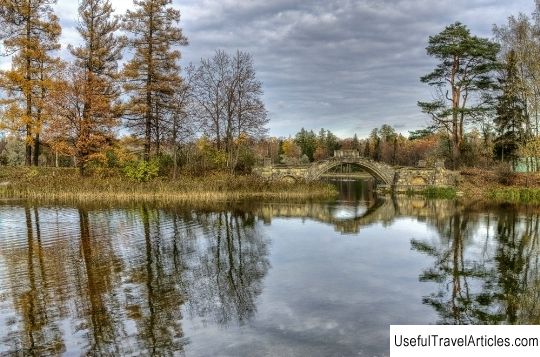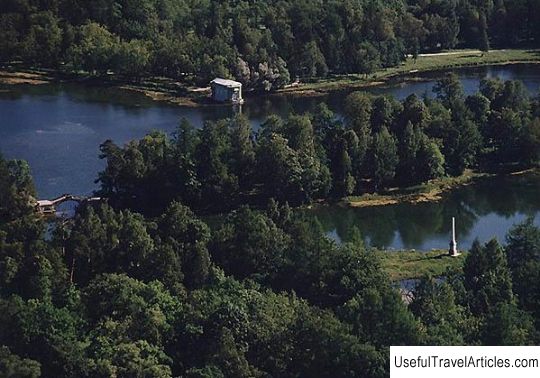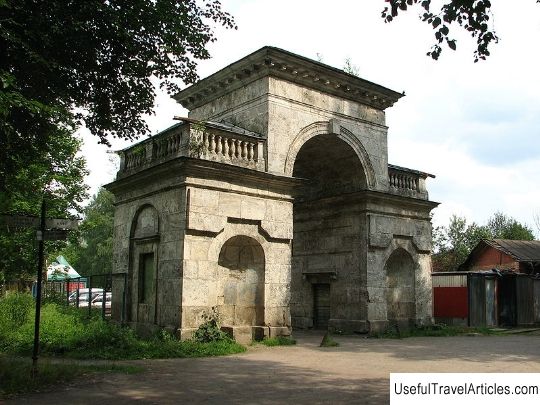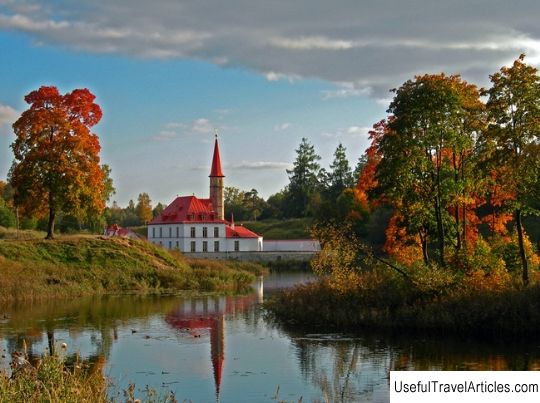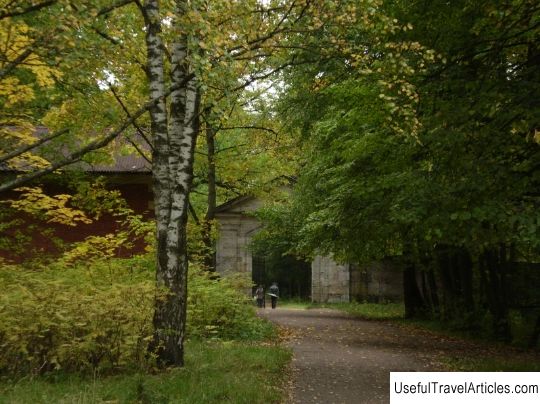Terrace-pier in the Palace Park description and photo - Russia - Leningrad region: Gatchina
Rating: 8,6/10 (2434 votes) 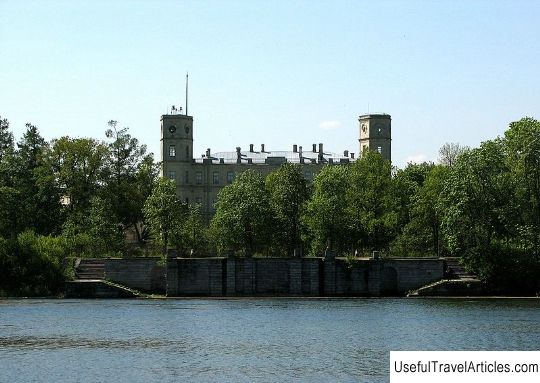
Terrace-pier in the Palace Park description and photo - Russia - Leningrad region: Gatchina. Detailed information about the attraction. Description, photos and a map showing the nearest significant objects. Photo and descriptionThe large jetty terrace, located on Long Island, is one of the central structures of the Palace Park and is the most outstanding piece of Vincenz Brenna's architecture in the park. Its construction began in 1792, and by the winter of this year, the main work was completed, but finishing lasted until 1795 It is located on the same axis with the palace. From the other side of the White Lake, thanks to the exact proportions and dimensions, the pier terrace is visually perceived as a palace basement. This impression is reinforced by the material of the pier finishing - Pudost limestone. All stone work on the construction of the pier terrace was carried out by the talented "stone craftsman" Kiryan Plastinin with assistants. On both sides there are staircases made of Chernitsky stone, which serve to descend to the water. The multi-ton bulk of the stone pier is set on wooden piles, and its walls plummet into the water. The terrace stretches for 51 meters along the coast. The walls are made of paritsa slabs. Two stone stairs, made of Chernitsky stone, descend to the water. The upper part of the terrace is arranged in the form of a platform, which is framed by a balustrade from the side of the lake. A small staircase leads to this platform from the side of the island, consisting of three steps. At the entrance to the site there are two sculptures of lying lions. There is no mention of these sculptures in the documents concerning the construction of the terrace. But there is an assumption that they were transferred here from another place during the time of Count Orlov. In addition to the balustrade, the terrace was decorated with 18 pudost stone vases. Previously, the lake near the terrace reached a depth of about 5-10 m, which made it possible to moor small sailing ships here. Nowadays, at the bottom of the lake, as in the old days, keys continue to gush. Around them, the water is not overgrown with algae, and the rays of the sun, making their way through the water, in the fountains of the springs shimmer with all the colors of the rainbow. The pier terrace and the adjoining garden have repeatedly served as a stage for festive fireworks and all kinds of theatrical performances. At the end of the 18th century. some kind of naval battles were even played out near its walls. Pavel Petrovich, trying to imitate his great-grandfather Peter I, built a small flotilla on the lakes in Gatchina. At the age of 8, he was granted admiral-general by Catherine II, and, in fact, was the commander-in-chief of the Russian fleet. Pavel Petrovich's Gatchina flotilla consisted of several yachts, small rowing and sailing vessels. Until the end of the 19th century. the 16-gun frigate Emprenable and the 8-gun yacht Mirolyub were anchored at the pier terrace. In the summer of 1796, the most famous “battle” on the White Lake was fought. Mini-squadrons were commanded by G. Kushelev, A. Arakcheev, S. Pleshcheev. At first, the ships maneuvered along the surface of the White Lake, fired at the shores, and then their teams descended to the Island of Love to occupy the heights near the Birch House. The fortifications built by the "enemy" were taken by the battalion under the command of Pavel Petrovich. Until the Great Patriotic War, the upper platform of the terrace was surrounded by a balustrade with marble statues and vases on its pedestals. The statues embodying various types of science and art, "Mathematics", "Sculpture", "Architecture", "Painting", belonged to the hand of the famous Venetian master of the 18th century. Giuseppe Bernardi Torretto. The statues were purchased in Vienna. Catherine II presented them as a gift to her favorite Grigory Orlov. The sculpture "Mathematics" subsequently changed its name. In 1798 the sculptor I.P. Prokofiev called it simply "Muse", and in the inventory of 1859 it appears under the name "Poetry". During the Great Patriotic War, the terrace balustrade was broken, and the lion sculptures were damaged. The statues "Painting" and "Architecture" were thrown from their pedestals, while "Poetry" and "Sculpture" disappeared and were considered lost for a long time. But in 1971, athletes from the OSVOD society lifted these statues from the bottom of the lake. They were thrown there by the German invaders. The white marble was covered with numerous German autographs, which dated back to 1942-43. Fragments of balusters and vases were also found at the bottom of the lake.      We also recommend reading Zhovkva castle description and photo - Ukraine: Lviv region Topic: Terrace-pier in the Palace Park description and photo - Russia - Leningrad region: Gatchina. |
